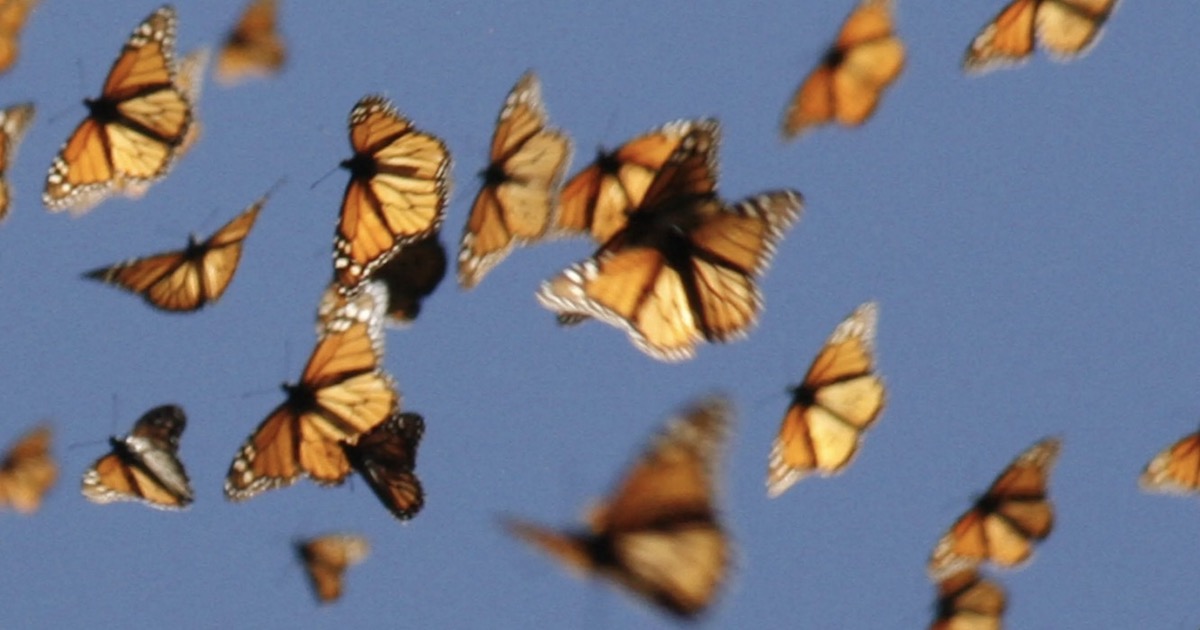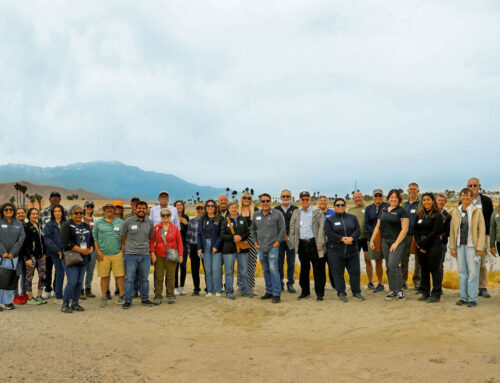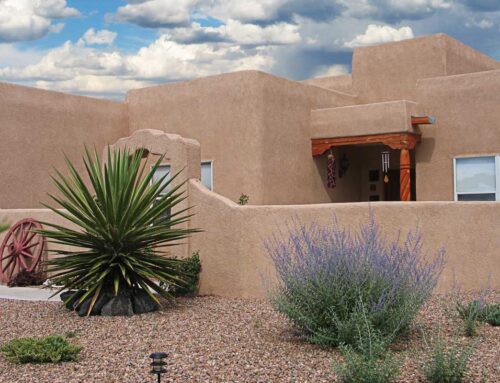After a very wet winter, the Coachella Valley was inundated with small orange and brown butterflies. Those Painted Ladies fluttered through in near-record numbers on their short migratory path. It was a wonder that had people talking – and made some drivers anxious – for weeks. While the numbers have dwindled, the interest in pollinators hasn’t.
Similar-looking Queen and Monarch butterflies, which are quite rare, have also made appearances here recently. Those two species rely on Desert Milkweed (also known as Rush Milkweed, scientific name asclepias subulata) to lay their eggs. This plant is not easy to find at nurseries – but is native to deserts in California, Arizona and Nevada. A local group, Milkweed for Monarchs, works to find supplies so that local residents, homeowners associations and cities can add this beneficial plant to their landscape palettes.
Desert Milkweed isn’t the only ingredient for a pollinator garden. There are a variety of flowering plants that are great for hummingbirds, bees and butterflies. There are several great examples of gardens designed to attract pollinators. Sunnylands in Rancho Mirage has beautiful native gardens with Desert Milkweed. They even have a program to train locals to tag Monarch butterflies and count their eggs. One of the local water districts, Desert Water Agency, also has a community pollinator garden at their office in Palm Springs.
The Children’s Discovery Museum of the Desert is offering a program during April for families to adopt Painted Lady caterpillars, build habitats for them and ultimately release them on Earth Day. The great thing about this program is it brings habitat home. If you’re interested in planting your own pollinator garden in an area where you currently have grass, contact your local water agency about a rebate. Planting pollinator-friendly plants not only saves water, but also is critical to protecting our native desert ecosystem.






